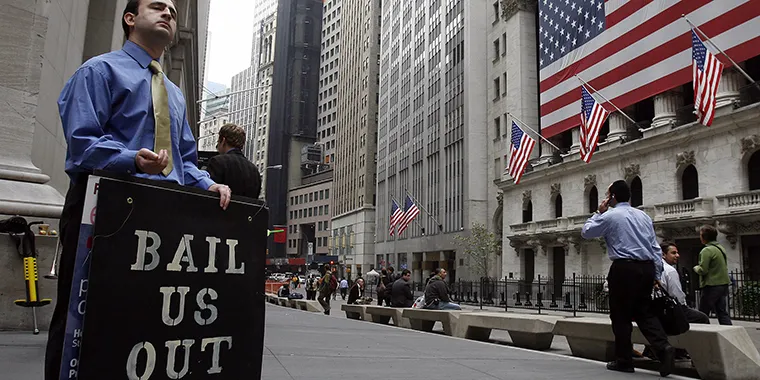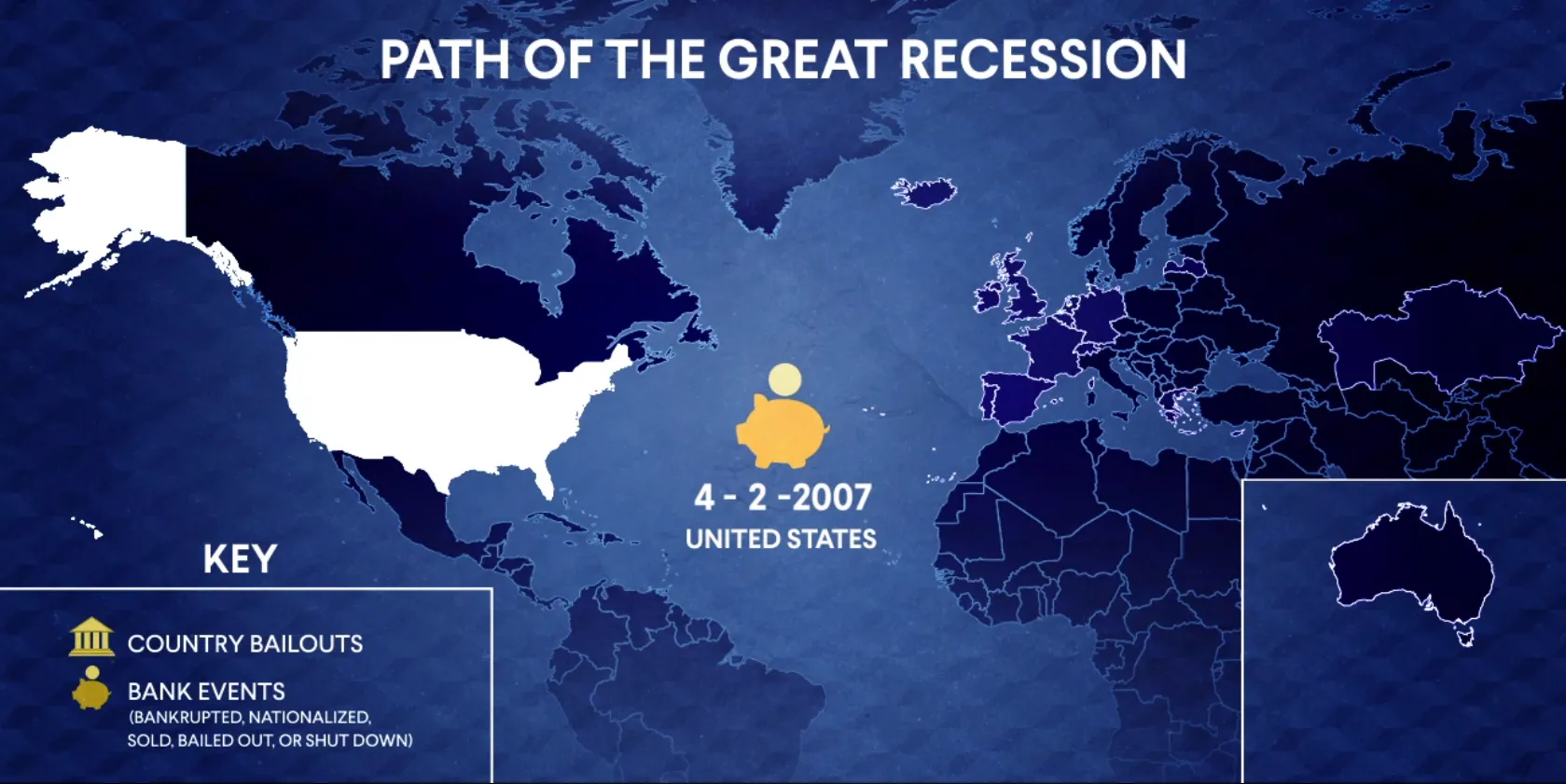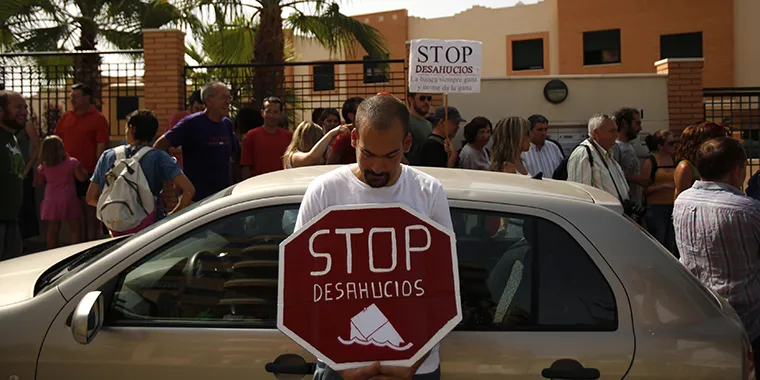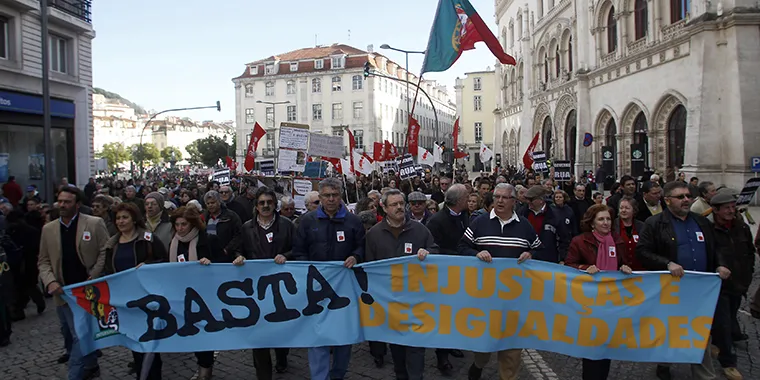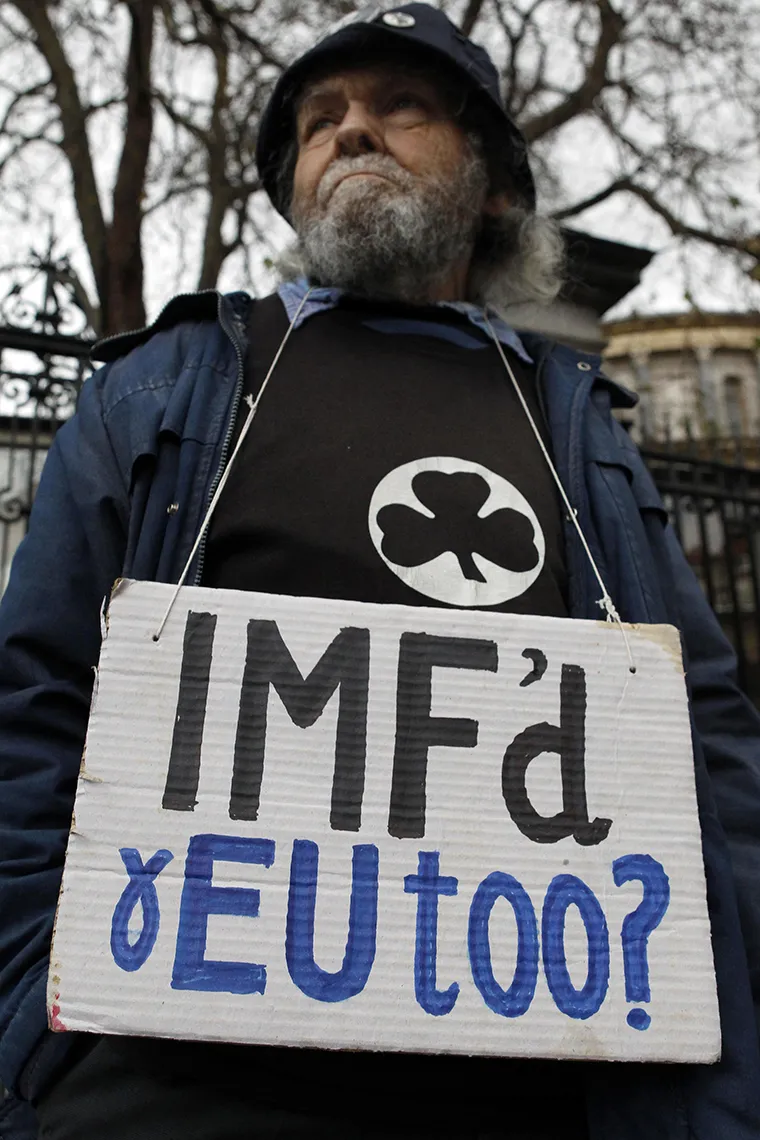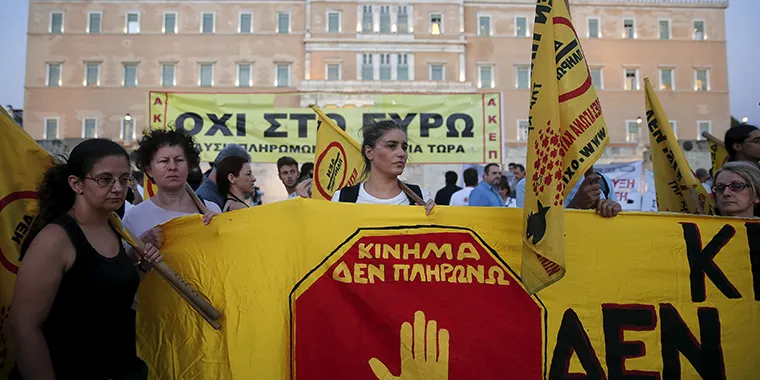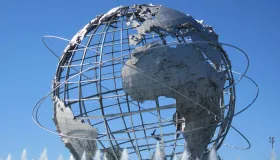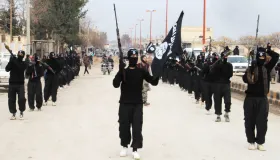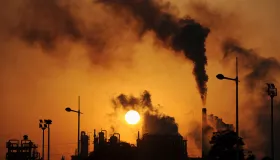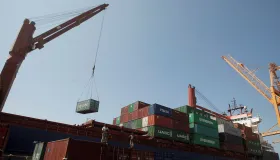The Global Consequences of Financial Contagion
What caused the Great Recession of 2008? Learn why a financial crisis can spread around the world with our modern globalized economy.
Teaching Resources—Monetary Policy: Economic Statecraft (including lesson plan with slides)
Higher Education Discussion Guide
The Great Recession began in the United States in 2008. By the end of that year, twelve of the United States’ thirteen most important financial institutions, many of which did extensive business overseas, were on the brink of failure. Within five years, the crisis had fully contaminated the global economy. In the wake of the Great Recession, nearly all of Europe’s major financial firms required bailouts. The magnitude of the crisis illustrates the extent to which the financial system is globally interconnected—and why that’s risky. In a world where financial problems don't respect borders, how do you coordinate an international response?
Why are economies around the world so interconnected?
The global financial system is more interconnected than ever. Over the past several decades, the financial industry has globalized and become more concentrated. The operations of various institutions—hedge funds, commercial banks, investment banks, and others—have gradually become more intertwined. Commercial and investment banks lend to one another, which links them directly. And financial institutions invest in common assets, a practice that links them indirectly. At the same time, distinctions among different types of financial institutions have blurred. The integration of financial institutions is due in large part to the 1999 repeal of the Great Depression–era Glass-Steagall Act. This act separated the activities of commercial and investment banking operations in the United States. After the repeal of Glass-Steagall, commercial and investment banking operations no longer had to be conducted separately. As a result, banks got bigger and even more intricately connected.
The industry is also concentrated. About twenty large complex financial institutions with vast operations—think JPMorgan Chase or Citigroup—dominate global finance. According to the International Monetary Fund (IMF), eighteen of these heavyweights were responsible for over half of the losses reported by banks and insurance companies around the world during the economic crisis of 2008. The American public lost out too, as one-in-five workers lost their jobs when the recession began.
Interconnectivity is supposed to make the global economy more efficient and effective. However, it’s also inherently risky because a problem in one institution can quickly spread to others. When that happens, it’s called contagion—the same word used to describe a disease spreading quickly from people in close contact. Because the global economy is like a web, domestic economic problems in one country can quickly become domestic economic problems in another. Or, as was the case in 2008, they can catalyze a worldwide economic crash.
How is the global economy run?
While economies around the world are interconnected, there’s no global central bank. This means there is no global currency and no global monetary policy.
Countries (or sometimes regions, as with EU countries) maintain separate currencies and monetary policies. Central banks around the world set various policies to meet their goals. For example, central banks strive to keep inflation to a certain percentage annually.
Of course, countries do cooperate on economic issues (they trade with each other and coordinate in times of crisis). Moreover, international financial institutions like the World Bank and the IMF exist. However, neither one is a global central bank. The World Bank gives loans and grants to low- and middle-income countries so that they can economically develop; the IMF aims to keep the international monetary system stable by monitoring countries’ monetary policies. The IMF can also provide loans if necessary. The World Bank and the IMF focus on their specific mandates and don’t function as a global central bank for a simple reason: there is no global currency.
When world leaders convened in Bretton Woods, New Hampshire, in 1944 to establish an international monetary system and create the World Bank and the IMF, their objective was not to create a unified system that every country in the world would use. Instead, these leaders—with the United States playing a central role—sought to establish a system in which countries would retain control over their currencies. Thus, the purpose of Bretton Woods was to create an international framework to promote trade and investment abroad. Given the size and strength of the U.S. economy, the U.S. dollar became the de facto global currency of this new system. The dollar is used by governments around the globe.
What is the United States' role in economics?
Because of the dollar’s special status, the United States exerts massive influence on the global economy.
The United States is home to less than 5 percent of the world’s population. However, its economy generates almost 25 percent of global gross domestic product (GDP), the sum of all final goods and services the world produces in a given time frame. The United States is also the largest importer and second-largest exporter in the world; in 2020, U.S. imports and exports totaled approximately $4 trillion. Beyond the sheer size of the U.S. economy, some of the world’s largest financial institutions are American banks with global operations. As a result, the economic health of the United States is vital to international prosperity.
As of January 2023, the United States amounts to over one-third of global stock market capitalization. The strength of the United States market capitalization comes in large part to the country's two biggest stock exchanges - the New York Stock Exchange (NYSE) and NASDAQ. The value of either exchange alone dwarfs other countries' stock exchanges.
Net outgoing foreign direct investment in the United States is almost one-fifth of the global FDI stock. This statistic provides information on the industries attracting investment. This metric shows that the United States has a relatively stable market with a favorable business climate for foreign companies to operate in.
Why did the 2008 U.S. financial crisis spread around the world?
What happens in the U.S. economy doesn’t just stay in the United States.
In the 1990s, U.S. banks began giving mortgages to subprime borrowers, people who were more likely to default on (i.e., not have the means to repay) their loans. To lend this money, mortgage issuers themselves borrowed money from investors. This practice had a domino effect. As people became increasingly unable to pay back their mortgages, banks began to run short of the money needed to repay their own investors. By 2008, the pattern of banks granting subprime mortgages and people defaulting on loans snowballed beyond U.S. borders and created an economic crisis that rippled through the intricate network connecting banks and other financial institutions around the world institutions that trade with, borrow from, and lend to one another every day.
How did the Great Recession of 2008 impact the world?
The network connecting banks and other financial institutions inside and beyond the United States is what spread the damages of so-called financial contagion.
In general, places with more ties to the global economy, like European countries, felt the crisis most quickly and acutely. Asia did not experience negative growth rates, but its exports dropped and the speed of the region’s economic growth slowed. Africa’s relative isolation from the global economy (and the increasing direction of its exports toward Asia rather than Europe) allowed many African countries to avoid the worst of the recession. Nevertheless, many African and South American countries still felt the reverberations of the crisis. Many nations that depend on exports of commodities such as oil, felt the effects of the global recession through declines in commodity prices and global trade.
How did countries respond to the Great Recession in 2008?
Because no single institution can prescribe a response to a global crisis like 2008, responses were varied.
Different countries enacted different policies to respond to the crisis. Each country’s response depended on its capabilities and domestic priorities. In the United States, the government responded to the financial crisis with bank bailouts, tax cuts, and direct government spending to boost the economy.
In Europe, many governments pursued austerity or deep cuts to social welfare. Austerity politics in Europe targeted spending in areas like health care and education. As Greece, Iceland, Ireland, Portugal, and Spain became infected by the global financial crisis, the EU and the IMF bailed these countries out. But the bailouts often came with conditions that the recipient countries cut their spending. Proponents of austerity argued that it was a necessary step to decrease debt. However, opponents of austerity maintained that spending cuts did nothing to resolve the financial crisis and simply deepened the public’s misery. In 2018, research from the Institute of International Finance showed austerity policies resulted in a 10 percent reduction in GDP growth in Europe compared to the United States.
What can the Great Recession tell us about the risks of future global financial crises?
The international response to 2008 showed what global coordination could look like—and what its limitations would be.
In 2008 and 2009, leaders from the twenty largest economies, known as the Group of Twenty (G20), met to discuss the crisis. They agreed to lower interest rates, increase government spending to boost their domestic economies, and help countries that were in the worst shape. The G20 also pursued regulatory reforms and kept international financial institutions like the World Bank and IMF well-resourced. In addition, the U.S. Federal Reserve gave U.S. dollars to central banks around the world via a monetary tool known as a swap line. With U.S. dollars, these banks had access to the main currency used in international transactions.
The cooperation of G20 leadership was essential but it wasn’t enough. No matter how much countries cooperate economically, and how carefully and frequently international institutions intervene, countries or regions are ultimately responsible for their own currencies and economic policies.
The health of the global economy still heavily depends on what these countries and regions decide to do. When the COVID-19 pandemic caused governments and economies to shut down around the world, the resulting crash provided many governments the opportunity for coordination. The recovery from the COVID-19 crash has not been perfect or equal from country to country. However, the global economy managed to avoid a financial crisis..
To learn more about the Great Recession, explore CFR's timeline, The U.S. Financial Crisis.
